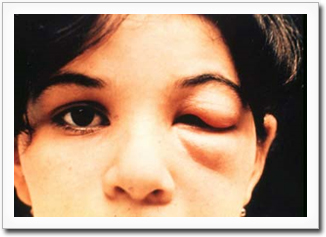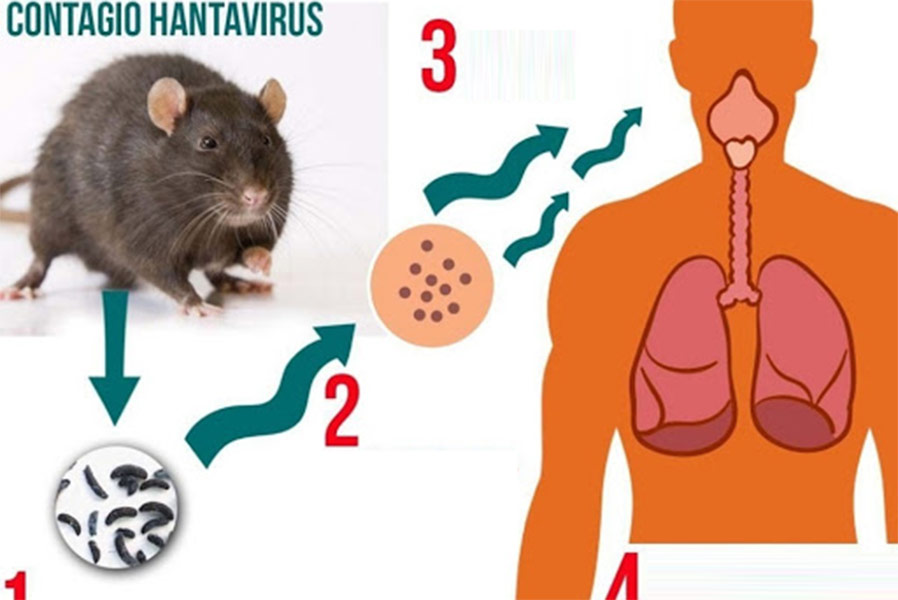Chagas’ disease, also known as American trypanosomiasis, is a parasitic illness caused by the hemoflagellate Trypanosoma cruzi (T. cruzi). It is found exclusively in the Americas, primarily affecting rural areas from Mexico down to northern Argentina. The disease is closely associated with poor socioeconomic conditions, and it is estimated that at least 20 million people are infected.
How the Disease SpreadsThe
T. cruzi parasite is transmitted to humans and other mammals by blood-sucking insects of the Triatominae sub-family, commonly called “kissing bugs”. The transmission cycle works as followsA triatomine bug becomes infected by feeding on the blood of an infected mammal. The parasite evolves into its infective form within the bug’s digestive tract over a period of 8 to 10 days. These infective parasites are then passed out in the insect’s feces.
Humans become infected not through the bug’s bite, but by “contamination” with its feces. After biting, the bug often defecates near the wound. If the person scratches or rubs the area, the infected feces can be pushed into the bite, a cut, or a mucous membrane like the eye.
Key signs of infection include:
Romaña’s Sign: This is a painful, one-sided swelling of the eyelids, which occurs if the parasite enters through the eye’s conjunctiva. It is a characteristic sign of the acute phase of the disease.
Chagoma of Inoculation: This is a local inflammatory reaction on the skin where the parasite first entered the body.
Besides the primary vector route, Chagas’ disease can also be transmitted through blood transfusions, from a mother to her baby via the placenta (congenital), or through accidental contact with infected animal blood.
The Stages of Chagas’ Disease
The illness typically progresses through two main stages: acute and chronic.
- Acute Stage
This is more common in the first years of life and lasts for one to three months. Symptoms can include a moderate fever, the ophthalmoglandular syndrome (Romaña’s sign), and edema (swelling). The spleen, liver, and lymph nodes may also become enlarged. In severe cases, especially among children, the acute stage can be fatal due to acute myocarditis (heart muscle inflammation) or meningoencephalitis.
- Chronic Stage
Following the acute phase, patients often enter a long asymptomatic period where the infection is only detectable by serologic tests. However, 10 to 15 years after the initial infection, the chronic stage may begin to manifest, primarily through slowly developing heart damage and cardiac enlargement. This damage eventually becomes irreversible as the inflamed heart muscle is replaced by fibrosis. This can lead to ventricular aneurysms and sudden death. In some geographic regions, particularly central Brazil, digestive issues such as megacolon and megaesophagus are also reported.

A Disease Linked to Housing
Chagas’ disease is fundamentally a rural problem tied to the quality of housing. The triatomine bugs that carry the parasite thrive in primitive houses constructed with materials like adobe or bahareque (mud walls) and thatched roofs. These insects find shelter and multiply in cracks in the walls, in roofs, beds, and behind furniture. The domestic transmission cycle, in which humans, domestic animals, and the bugs coexist, is the most significant for maintaining the infection in these areas.
Diagnosis and Treatment
The diagnosis of Chagas’ is based on detecting the T. cruzi parasite in the blood through methods such as xenodiagnosis or blood cultures. Four main serologic techniques are also used to detect antibodies. A presumptive diagnosis can be established based on clinical symptoms, reactive serologic tests, and a history of having lived in an endemic region.
Currently, only two drugs, Nifurtimox and Benznidazole, have demonstrated some effectiveness against T. cruzi. Nifurtimox has a reported cure rate of 75-90% in the acute stage of the disease. Its effectiveness in the chronic stage is still being evaluated; while it can clear parasites from the blood, serologic reactivity often remains for years, although it may halt the progression of heart damage. The drug is also known for its toxicity and side effects, particularly in adults.
Control and Prevention
Control measures are primarily aimed at eliminating the triatomine bugs from human homes. The most successful approaches have been the use of insecticides and, more permanently, housing improvement.
A notable success story comes from Venezuela, where a program combining insecticide spraying with the replacement of palm roofs with tin ones began in the 1960s. This initiative led to a significant reduction in seropositivity in the state of Lara, from 44.4% between 1959-1968 to 13.1% in 1980-1981. Among children aged 0-9, the rate dropped from 20.5% to just 1.3% in the same period. Further studies have shown that improving houses by plastering walls, cementing floors, and adding zinc roofs can make them virtually free of vectors, demonstrating that enhancing living conditions is a key strategy in the fight against Chagas’ disease.


